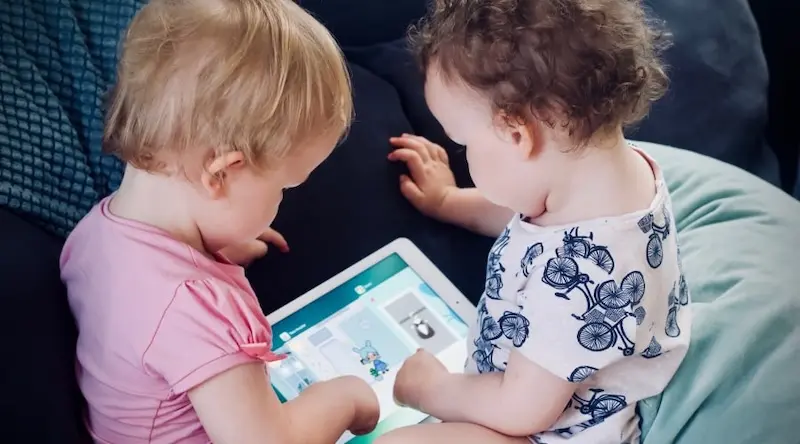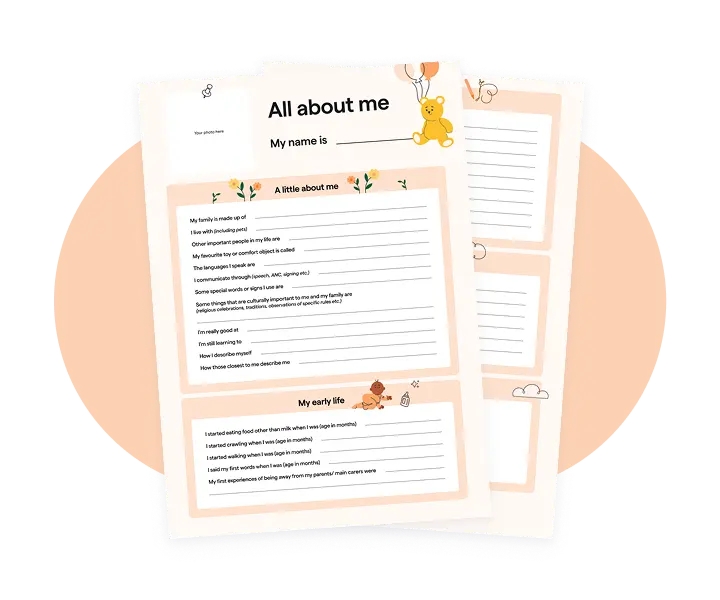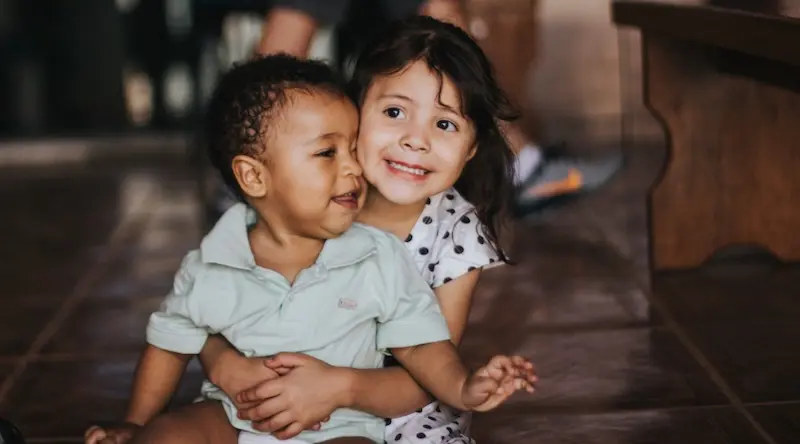settings
children
With Famly since
The uncomfortable truth is: you are biased. I am biased. We are all biased in one form or another. Our bias can be conscious or unconscious, innate or leant – and ultimately results in us placing disproportionate weight in favour or against a person, idea, group or thing, often without evidence or just cause.
Whilst we all have them, failing to recognise or address our bias can have catastrophic results at an individual and societal level. It entrenches prejudice. It entrenches inequity.
It’s time to talk about them.
What are stereotyping and unconscious bias?
Stereotyping is when we generalise about a particular group. In our experience, such generalisations are common and influence how people interact with children and the opportunities they get. For example, some of the most prevalent stereotypes we’ve heard are:
- Only boys can build a dam
- Jewish girls don’t climb trees
- Asian children are passive and good at maths
- Black girls are loud and bossy
- Girls don’t play with sticks and stones
- Black boys are good at sports
When left unchecked, stereotypes can fundamentally impact outcomes for children. When someone remarks that ‘only boys can build a dam’ or ‘girls don’t play with sticks and stones’, how does this affect their practice? Are boys encouraged to go outside and develop their hand and eye coordination more? Do girls learn that the only place they can add value is inside?
These beliefs reinforce gender bias and the more they are heard or felt the more likely it is that a child will internalise such beliefs about themselves, which can be detrimental to their sense of self-worth.
Unconscious bias is when we intuitively draw on our stereotypes to make value judgements without enough knowledge, evidence, understanding or reflection. Unconscious bias can show itself in a whole range of ways including affinity bias, attribution bias and confirmation bias and – importantly – it may not even chime with our consciously held beliefs.

The unique child
All children are individual human beings, who develop in unique and diverse ways. Nonetheless, it is all too easy to unconsciously stereotype them based on their identity or behaviour. Children learn from their first-hand experiences. This means that if they encounter stereotypes and discrimination, they will learn from it and may re-enact them.
It is vital that we are aware that our attitudes and practices can affect children’s self- esteem both positively and negatively. The challenge for us is to learn how to treat all children with equal care and compassion irrespective of race or gender, particularly when their cultural expectations and behaviours are different from our own.
The big ideas
A case study in bias #1
5-year-old Kemi was excluded from a game because of her race. Whilst at school, one child said to her: ‘My mummy said I’m not allowed to play with black girls’.
The educator supported Kemi to understand this experience and gave her a language to express how she felt by reading her a story called ‘Little People, Big Dreams’: by Maya Angelou. The story is about a girl being treated unfairly because of the colour of her skin -Kemi was able to identify with the main character in the book and process what had happened to her. The educator also talked about race and the importance of diversity and inclusion with all of the children. They were encouraged to discuss their views, by applying the discussion to their own situation.
We have to listen to children and give them space and time to express themselves in their own way, but should challenge where we hear them recounting stereotypes. We need to consider how we support the unique child’s:
- Individual development including self- esteem and identity
- Individual interests
- Communication style
- Learning preference
- Moral and spiritual development
As professionals, we should ask ourselves:
- How many of the books in our library show a diverse array of heroes and heroines?
- How do we celebrate different cultures to show that all children are unique and valued?
- How do we challenge bias and prejudice when we see it or hear it, whether that be in our own practice or in the behaviour of others?

Positive relationships
It can be easy to establish respectful relationships with parents that we have an affinity with. We may share the same race, religion, culture, and class or live in the same area.
The challenge is to develop and maintain a respectful dialogue with all parents, irrespective of any perceived differences. This means that we need to make time to involve parents in the decisions we make about their child’s development and learning. It is vital that we share knowledge with parents about how their child learns, that we appreciate and value the play of all children, even when it makes us feel uncomfortable or it’s unfamiliar.
We need to consider how well we know all of the children in our groups or classrooms and not just the children we have an affinity with. Ask yourself:
- How can we find out about children’s cultural identity and heritage?
- How can we support them to make sense of the world around them?

Enabling environment
All staff need to have a consistent approach to valuing, respecting and working with children, regardless of their race, gender or class. It is vital that the learning environment reflects the experiences and interests of all children, families and wider communities.
As educators, you need to have a knowledge and understanding of every child’s backgrounds if they are to genuinely integrate cultural practices into everyday provision without them becoming tokenistic. Some children may come from homes where the culture is different from the other children in the setting. We need to reflect on how the learning environment allows children to make independent choices and decisions; to pursue their own interests with and without adult support.
For example, some children will encounter obstacles to learning, due to a disability, illness or because the child speaks another language or they may be shy and frightened to speak up in the setting. When we observe these children, we need to be aware of our own bias and stereotypes. Ask yourself:
- How do we structure our observations and decision making to prevent us from reinforcing our own bias?
- How do we use this information to plan for a child’s learning?
- How can we ensure that we provide a place to learn where children feel at home and valued?

Learning and development
It is important that we recognise that our policies must reflect what is actually happening in our everyday practice. It is no good saying that we will not tolerate discriminatory behaviour, and then turn a blind eye when we see it because it’s too difficult or uncomfortable to discuss. It must be challenged every single time, without fail.
Ally is a verb, not a noun. It requires action and all educators must be committed to doing the work to ensure children are treated fairly. We need to consider how we value what parents tell us about the way in which their children play and learn at home, and not to make assumptions about their behaviours.
A case study in bias #2
7-year-old Ryan is South African and is currently fascinated with the Anglo-Zulu wars of 1879. During lockdown he’s spent months re-enacting wars, sometimes as a British soldier and at other times a Zulu warrior. Ryan dresses up and uses different objects as a gun, spear or shield. His mother had ongoing conversations with him about the history of these wars, about the fact that a gun can kill more easily than a spear and thus how these Anglo-Zulu wars were not fair on the Zulus.
However, his father wanted to stop Ryan from playing this game. He was quite concerned that the school will see his play as prejudicial or racist, especially when Ryan acts as a British soldier and wants to ‘shoot the Zulus’.
The educator explained that Ryan’s play was not racist, but the war was. Play is Ryan’s way of making sense of his world by exploring ideas of good versus bad, different characters and working it all out. She also encouraged Ryan’s mum to continue to teach Ryan the facts and to visit museums to help him develop a framework for his understanding.
By building relationships with parents and finding out about a child’s home life that we can share meaningful information about children’s learning with parents. Ask yourself:
- How are you supporting children and parents in understanding development and learning opportunities?
- In what ways are children supported to discover good versus bad?
As educators, we have a professional and moral duty to reflect and understand our own bias, including how it can affect our practice and entrap our decision-making. But, the work only begins here. Once we have taken the time to understand our bias we must actively challenge ourselves, and others, to ensure we are truly able to assess the holistic needs of the child and act in their best interests.
All children are unique and deserve to be treated as such. They have their own interests and personalities, their own strengths and weaknesses. Who they are should be valued and they should be encouraged to shine, not subjected to our bias of what we think they should be.
Try learning journals for free
Add observations, and build digital learning journals to share with families instantly. All with your completely free 14-day trial.
Get started









